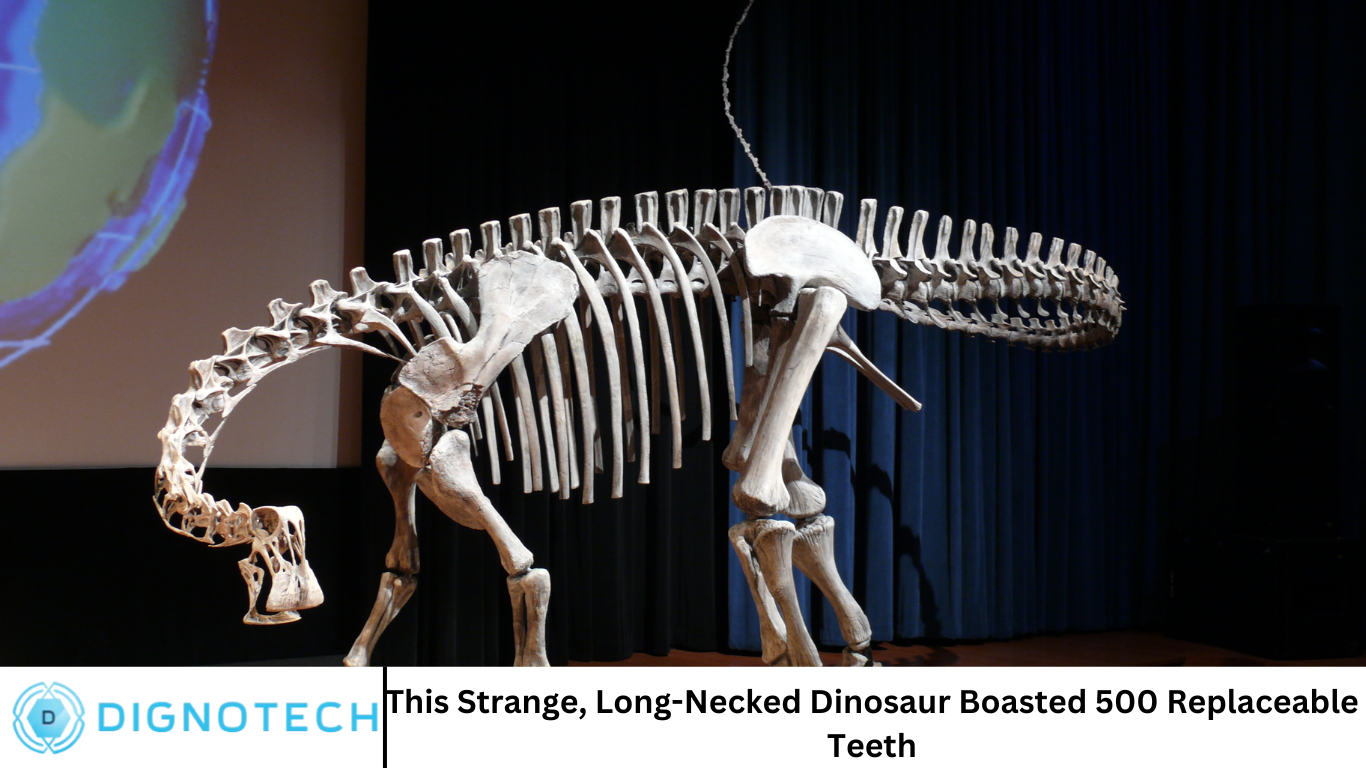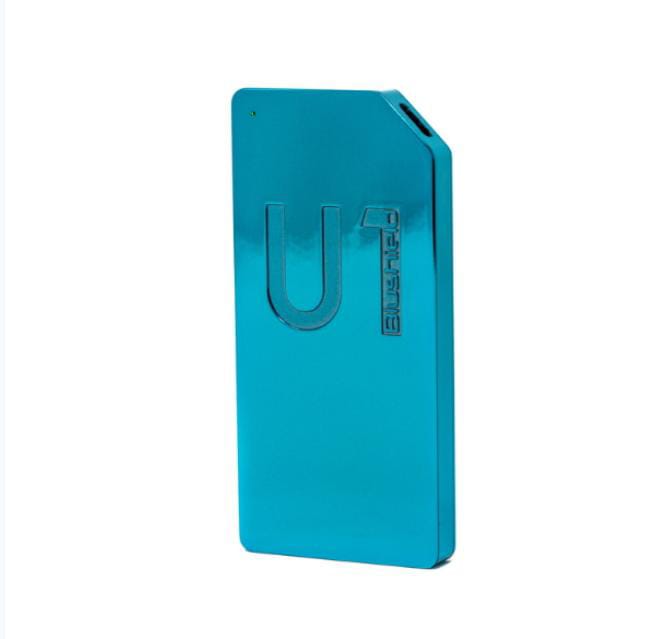This Strange, Long-Necked Dinosaur Boasted 500 Replaceable Teeth

Hi everyone! How are you all doing? Welcome to dignotech.com! The age of the dinosaurs was full of awe-inspiring creatures, but some species left behind evidence that continues to baffle paleontologists and fuel imaginations. Among the many strange and fascinating dinosaurs discovered, one particularly stands out—a bizarre, long-necked dinosaur with 500 replaceable teeth.
This creature not only had a distinct appearance but also a set of biological traits that were both unique and crucial to its survival in a distant, prehistoric world. In this article, we will explore the anatomy, lifestyle, and discovery of this remarkable dinosaur and examine its role in ancient ecosystems.
The long-necked dinosaur with 500 replaceable teeth might sound like the stuff of legend or a science fiction story, but this creature was very real. Known to paleontologists as Nigersaurus, this dinosaur roamed the Earth approximately 110 million years ago during the Early Cretaceous period. It was discovered in the Republic of Niger, which is where its name originates. The unique feature of Nigersaurus—its 500 replaceable teeth—has captivated the attention of researchers and enthusiasts alike.
The Anatomy of Nigersaurus
1. Long Neck and Small Body
*One of the first things that sets Nigersaurus apart from other long-necked dinosaurs is its relatively small body size. Despite having a neck that could stretch several meters, Nigersaurus was a relatively lightweight herbivore. It was about 9 meters (30 feet) long, and much of its length was due to its long neck. The size of the body was in line with other members of the Sauropod group, which typically had enormous bodies, but in the case of Nigersaurus, its build was less massive, more nimble, and adapted for different ecological functions.
The neck of Nigersaurus was long, but not in the same proportion to its body as in some of the largest sauropods like Brachiosaurus. This gave Nigersaurus an ability to reach a wide variety of plants, particularly those close to the ground.
2. Unique Teeth Structure
The most extraordinary feature of Nigersaurus was its set of 500 teeth. Unlike many herbivorous dinosaurs, whose teeth were designed for chewing and grinding, Nigersaurus had teeth that were specialized for scraping and cropping. These teeth were arranged in a wide, shovel-shaped pattern in the front of the mouth, and the dinosaur used them to graze on soft, low-lying plants, such as ferns, shrubs, and mosses.
Interestingly, these teeth were constantly replaced throughout its life, ensuring that Nigersaurus always had a fresh set to carry out its feeding tasks. The replacement of teeth was not an occasional event but an ongoing process that meant its dental system could have as many as 500 teeth at any given time. This feature likely provided Nigersaurus with a significant evolutionary advantage, as it could continue feeding without the risk of tooth wear and tear that might afflict other herbivores.
3. Skull and Jaw Design
The skull of Nigersaurus was relatively lightweight compared to some other large dinosaurs, further enhancing its agility. It featured a narrow, elongated shape, allowing the animal to feed efficiently on ground-level vegetation. Its jaw had a strong but delicate structure, suited for its specific feeding strategy of cropping plants.
The teeth of Nigersaurus were spaced out evenly, and the animal’s jaw was flexible enough to allow for continuous chewing without causing strain. These physical adaptations helped Nigersaurus thrive in its ecosystem and made it an efficient consumer of plants.
The Feeding Habits of Nigersaurus
The 500 replaceable teeth of Nigersaurus were not simply a curiosity but a testament to its specialized diet and unique method of feeding. Unlike other herbivorous dinosaurs that might have used their teeth for grinding tough plants, Nigersaurus relied on its teeth to scrape and cut through softer vegetation. Its wide, flat teeth acted like a set of scissors, efficiently snipping plants at ground level.
The jaw structure was adapted for quick, repetitive motion, allowing the dinosaur to process large amounts of food. This was essential for Nigersaurus, as it needed to consume a vast quantity of vegetation to sustain its relatively large body.
The Habitat of Nigersaurus
The discovery of Nigersaurus in the Sahara Desert of Niger might seem odd at first, as this is a region characterized by extreme aridity. However, during the time of Nigersaurus‘s existence, the climate was very different. The Sahara was once a lush, green landscape with a variety of plant life. The region was dotted with lakes, rivers, and wetlands, providing a perfect habitat for herbivorous dinosaurs like Nigersaurus.
The abundance of low-lying plants and ferns, which Nigersaurus was particularly suited to eat, made this an ideal environment for the dinosaur. The presence of other herbivores and predators would have contributed to a rich and diverse ecosystem, with Nigersaurus playing a critical role in maintaining the plant life through its feeding.
The Discovery of Nigersaurus
The first fossils of Nigersaurus were discovered in 1997 by a team of French paleontologists in the Sahara Desert. The fossils were remarkably well-preserved, giving researchers an unprecedented look at the anatomy and feeding mechanisms of this unique dinosaur. The team, led by renowned paleontologist Philippe Taquet, initially unearthed fragments of the dinosaur’s bones and teeth, and further excavations eventually led to the discovery of an almost complete skeleton.
The discovery of Nigersaurus was a breakthrough in the study of Cretaceous dinosaurs and provided valuable insights into the diversity of herbivorous dinosaurs in the era. Not only did it reveal an animal with 500 replaceable teeth, but it also showcased the wide range of adaptations that existed in dinosaurs, tailored to their specific environments and feeding habits.
Evolutionary Significance
The specialized dental structure of Nigersaurus offers an intriguing glimpse into the process of evolution. The fact that this dinosaur had 500 replaceable teeth indicates a unique evolutionary pathway where tooth replacement played a crucial role in its survival. This adaptation allowed it to thrive on a diet of low-lying plants, and the ongoing teeth replacement system was likely an answer to the constant wear and tear caused by its scraping feeding behavior.
Moreover, the long neck and specialized jaws demonstrate the diversity of feeding strategies that evolved in different dinosaur lineages. While some dinosaurs developed massive, crushing teeth for chewing tough vegetation, others, like Nigersaurus, adapted to grazing on softer plants by evolving specialized teeth that were constantly replaced.
What Made Nigersaurus Different?
In the grand scope of dinosaur evolution, Nigersaurus stands out as an example of specialization. Its teeth were not designed for grinding or chewing tough plant matter, as seen in other herbivorous dinosaurs, but were instead perfectly suited to feeding on the soft, low-lying plants found in its environment. This specialization allowed it to occupy a distinct ecological niche and avoid competition with other herbivorous dinosaurs.
Additionally, the fact that it had 500 replaceable teeth set it apart from other species. Most animals, including modern herbivores, only have a limited number of teeth and rely on continuous wear for grinding their food. In contrast, Nigersaurus had a nearly constant supply of fresh teeth, ensuring that its feeding efficiency never diminished.
Frequently Asked Question
Why did Nigersaurus have so many teeth?
Nigersaurus had 500 teeth because it evolved to continuously replace its teeth throughout its life. This allowed the dinosaur to maintain efficient feeding, as its teeth were used to scrape and crop soft vegetation.
What did Nigersaurus eat?
Nigersaurus primarily fed on low-lying plants such as ferns, shrubs, and mosses. Its teeth were adapted to scraping and cropping these plants, which it could find near the ground.
How did Nigersaurus‘s teeth stay sharp?
The teeth of Nigersaurus were constantly replaced as they wore down, ensuring that it always had a fresh set of teeth for feeding. This ongoing replacement kept the teeth sharp and functional for its specialized feeding.
Where was Nigersaurus discovered?
The fossils of Nigersaurus were discovered in the Sahara Desert, specifically in the country of Niger, in 1997.
How big was Nigersaurus?
Nigersaurus was about 9 meters (30 feet) long, with a long neck that helped it reach a variety of plants. However, its body was relatively small compared to other long-necked dinosaurs.
How did Nigersaurus‘s teeth evolve?
Nigersaurus evolved its specialized teeth as a way to efficiently feed on soft, low-lying plants. The constant replacement of teeth helped it maintain this feeding strategy throughout its life.
What made Nigersaurus unique among other dinosaurs?
Nigersaurus was unique due to its 500 replaceable teeth, which were specialized for scraping and cropping low-lying vegetation. Its small body size and long neck also set it apart from other large herbivorous dinosaurs.
Conclusion
Nigersaurus was an extraordinary dinosaur, showcasing the wonders of evolution and adaptation. Its 500 replaceable teeth, long neck, and specialized feeding habits made it a unique member of the dinosaur kingdom. Through its discovery, scientists have gained new insights into the diverse range of feeding strategies that dinosaurs developed and how these strategies helped them thrive in the ecosystems they inhabited. The fascinating anatomy of Nigersaurus serves as a reminder of the complexity and diversity of life during the Cretaceous period and continues to inspire curiosity among paleontologists and dinosaur enthusiasts alike.




